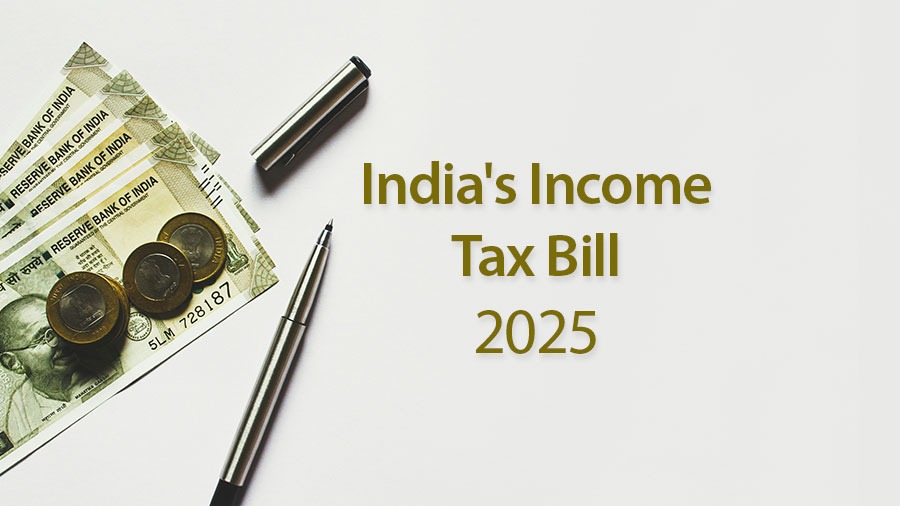The Indian government has introduced the Income Tax Bill 2025, a landmark update set to replace the decades-old Income Tax Act of 1961. This bill, passed by the Lok Sabha on August 11, 2025, aims to simplify India’s tax laws, update tax slabs, improve compliance, and reduce disputes—finally bringing direct tax legislation into the 21st century. Here’s a detailed breakdown of the key takeaways taxpayers should be aware of as this new framework prepares to take effect from April 1, 2026.
Key Highlights of the Income Tax Bill 2025
The new bill cuts down the complexity of income tax law by nearly 50%, with clearer, more straightforward language and well-organized sections, making it easier for taxpayers and professionals to understand and comply.
The historic Income Tax Act, 1961 is repealed and replaced by this bill comprising 536 sections grouped into 23 chapters along with 16 schedules — all designed to promote transparency and digital-first compliance.
Importantly, the bill maintains existing tax rates and regimes for individuals and corporations, meaning no surprises in the percentage of tax payable, but introduces a new progressive slab structure with increased exemption limits.
What’s New in Tax Rates and Rebates?
The basic exemption limit has been raised from ₹3 lakh to ₹4 lakh annually, providing relief especially to low-income earners.
A key feature is the enhanced rebate system: taxpayers earning up to ₹12 lakh can effectively pay zero tax through a tapered rebate that caps at ₹60,000. Salaried individuals with standard deductions can enjoy tax-free income up to approximately ₹12.75 lakh.
The tax slabs under the new regime are structured progressively, starting with nil tax up to ₹4 lakh and incrementally increasing to 30% for income above ₹24 lakh.
Simplified Capital Gains and New Asset Definitions
Capital gains provisions have been restructured for clarity and fairness, including clear classification and taxation rules for long-term and short-term gains.
Notably, digital assets such as cryptocurrencies are now formally classified as capital assets and taxed accordingly, reducing ambiguity for investors.
Revised Provisions for Property Owners
The bill clarifies that taxpayers will pay tax on the higher of actual rent received or deemed rent on property income, simplifying earlier confusion.
Exemptions have been introduced for vacant commercial properties that are temporarily unoccupied, providing some relief to property owners.
Interest deductions on pre-construction home loans are allowed in five equal installments post-construction for both owner-occupied and rented properties.
Fairer Treatment for Pensioners and Non-Employees
Pension income rules have been updated to allow pensioners and non-employees to claim deductions equally, removing disparities in taxation.
Streamlined Compliance and Digital Processes
Faceless assessment and faceless collection procedures, introduced earlier, are reinforced and further integrated to minimize direct interaction between taxpayers and tax authorities.
Refund claims can now be filed even if income tax returns are late due to genuine reasons like illness or technical issues, removing harsh penalties on honest taxpayers.
TDS (Tax Deducted at Source) and TCS (Tax Collected at Source) sections have been rationalized and logically grouped to simplify withholding tax compliance.
Clarity on Residential Status and Taxability
The bill codifies the tax implications based on residential status more clearly, outlining taxability for resident, non-resident, and not ordinarily resident categories with respect to income sources and receipts.
Implementation Timeline and What Taxpayers Should Do
The Income Tax Bill 2025 is slated to come into effect from April 1, 2026 (Financial Year 2026-27), giving taxpayers, businesses, and tax professionals ample time to prepare and adjust to the new rules.
Given the changes in rebate structures, slab rates, and capital gains provisions, individuals and investors are advised to reassess their tax planning strategies for the upcoming fiscal year.
Digital compliance will continue to be emphasized, so timely and accurate e-filing will remain essential to avoid penalties or delays in refunds.
Why This Matters
After more than 60 years under the same tax law — which had grown bulky with over 4,000 amendments — this overhaul aims to make tax laws more accessible and less dispute-prone. The clearer rules, combined with modern digital administration, aim to boost tax compliance, reduce litigations, and increase taxpayer confidence.
The formal inclusion of cryptocurrencies under taxable capital assets signals India’s intent to regulate digital finance transparently. Improved treatment of pension income and property taxation will also provide fairness across various taxpayer groups.
In sum, the Income Tax Bill 2025 is a welcome modernization moving toward a citizen-friendly, technology-driven tax system while preserving government revenues. Knowing these changes will help taxpayers plan better, comply more smoothly, and take full advantage of new rebates and clarifications.
Sources: PRS India, Jagran Josh, India Briefing, ClearTax, News18, Economic Times, NDTV, Government of India Finance Ministry

